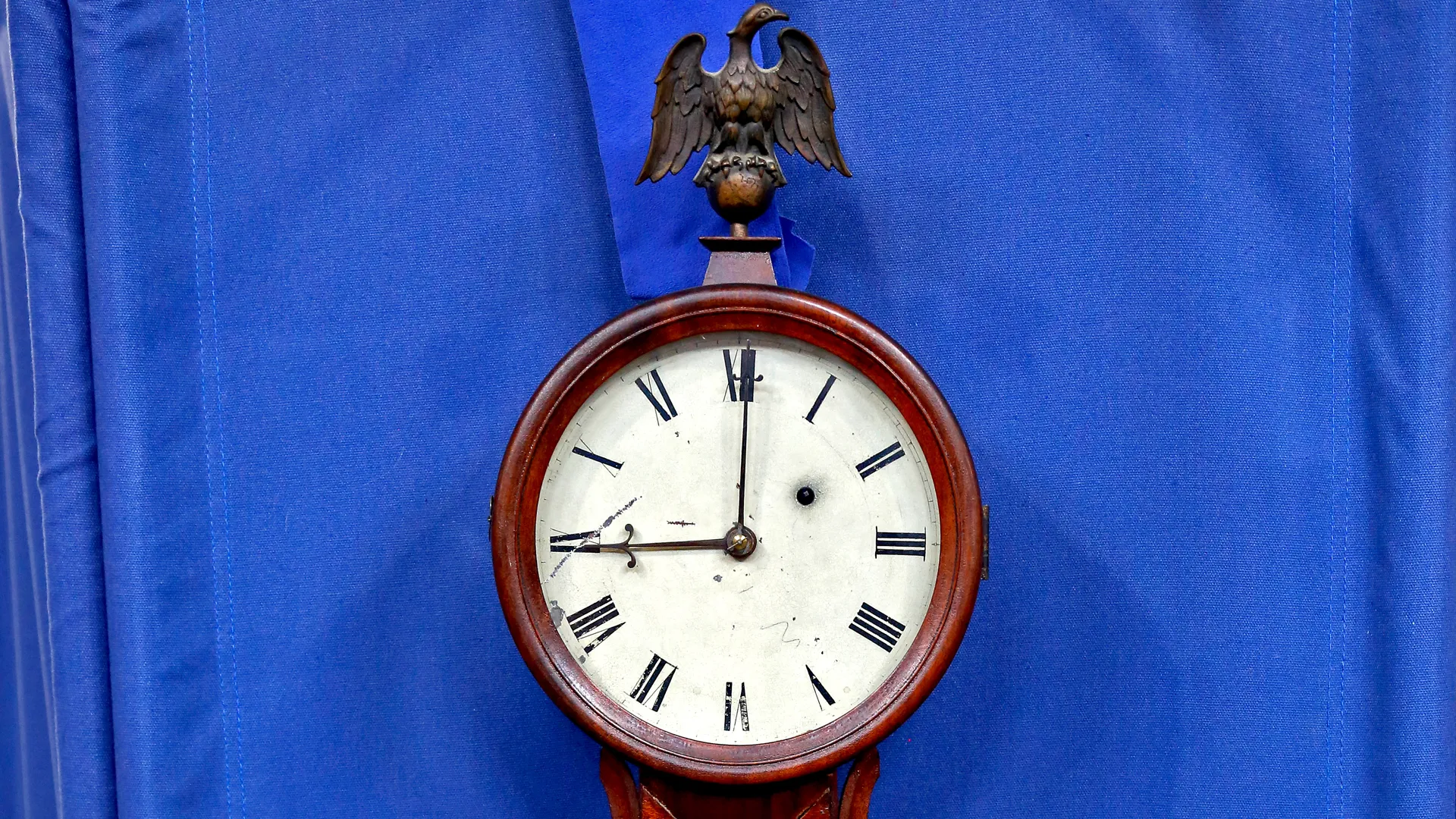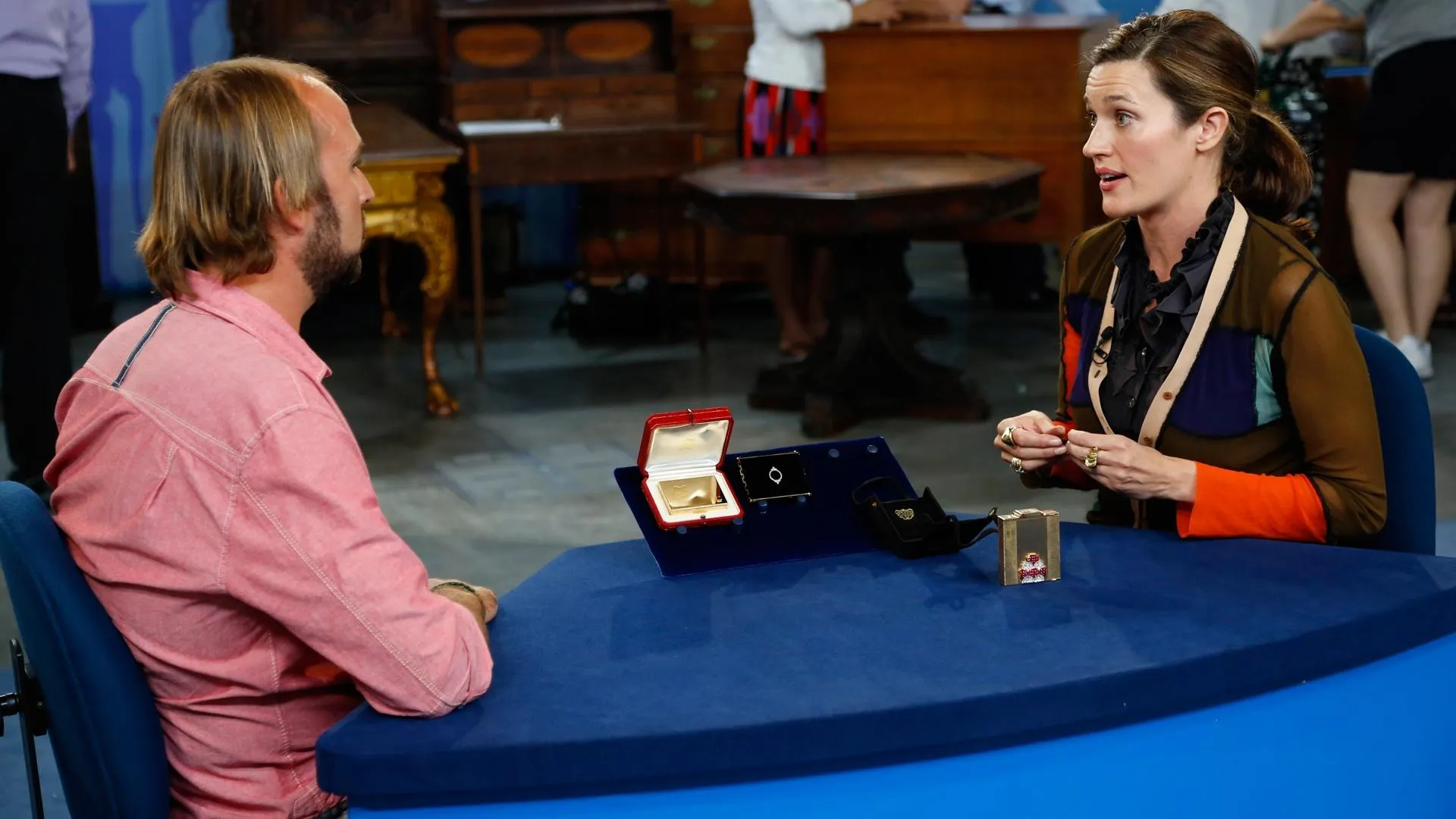GUEST: I have an antique banjo clock that's been in the family for-- through my great-grandparents, that I know of.
APPRAISER: And where were they from?
GUEST: Central New York. My dad wound it every Saturday for as long as I can remember.
APPRAISER: Do you know anything about it?
GUEST: No, I really don't. Just know it's a banjo clock, and that's it.
APPRAISER: That's it. Well, what you brought we do call a banjo clock today. Originally it was called an improved timepiece. And the form was invented by Simon Willard in 1802. And he actually had a patent for this clock. The patent ran out after 14 years and clockmakers that were in the business of making tall case clocks soon started taking orders for these because they were so much less expensive that the tall clock pretty much fell out of fashion as a result of that. Banjo clocks were made in significant numbers. And this is a clock that really represents the end of the line in terms of arguably handmade production. After this clock, which was made in North Attleboro, Massachusetts, by Horace Tifft, the big companies of Connecticut start making clocks and clockmakers can't compete. A clock like this originally sold for somewhere in the neighborhood of $30, at a time when you could buy a clock out of Connecticut for, oh, say, five, six, seven or ten dollars apiece. So it was really a grand luxury to have a brass movement, weight-driven clock from North Attleboro. This clock has a lot of the Attleboro features: canted frames, wooden side arms, wooden bezel, and the little brass hooks that are on the side. This case is a mahogany case. The canted frames indicate it's the latest form in terms of production. They would have started with flat frames and then gilded frames. And these canted frames were really the end of the line. It's made circa 1840. It's really the earliest version of the Attleboro clocks. And they're made until about 1850, and the production is, for the most part, all done in clocks like this. This is sort of the entry level, weight-driven banjo that collectors look for and the condition of it is just absolutely perfect.
GUEST: Great.
APPRAISER: The dial is in very nice condition, the hands are really wonderfully shaped. You know that the finial has been replaced at some point. But it's an appropriate finial for the form. It doesn't really detract from the clock at all. In a retail shop, if you had to replace a clock like this, you should expect to spend somewhere around $2,500 for an example that's as good as this.
GUEST: Nice, very nice.
APPRAISER: Not a bad day's pay.
GUEST: I'm happy.





